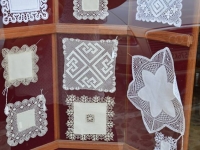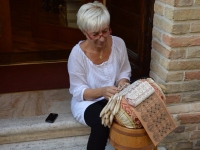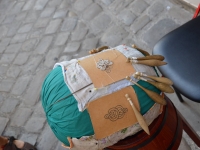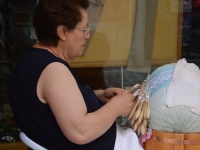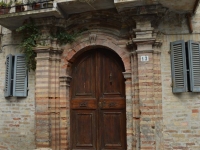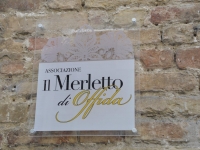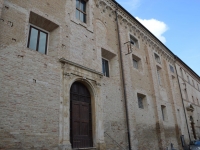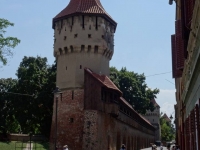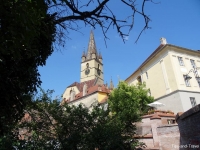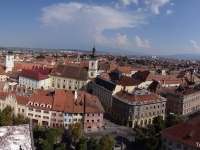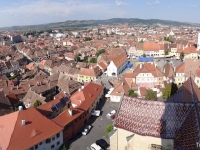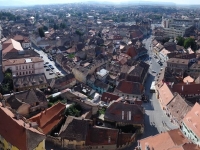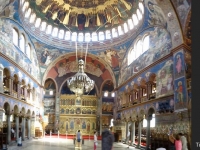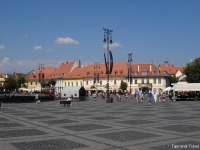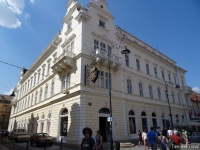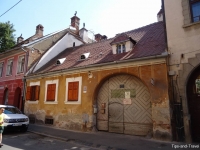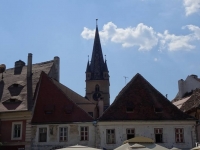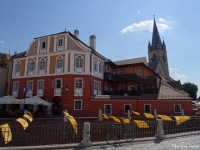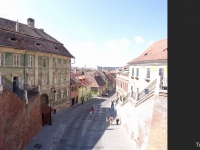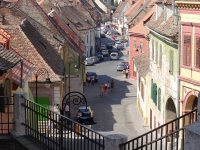Category: Europe
Offida, Ascoli Piceno, Marche, Italy
Offida is a municipality in the Province of Ascoli Piceno in the Italian region Marche, in central Italy. Situated at an altitude of 292 meters, in a region of hills (Apennines) lined with vineyards, orchards, fields of cereals and dotted with groves, all descending towards the Adriatic Sea. You can still see in the streets of Offida lace-makers practicing their art at the sight of the passers-by, thus perpetuating this tradition of mother to daughter for five centuries. A monument has been erected in their honor at the entrance to the fortified town. Its historic center is perfectly preserved and is still encircled by the 12th century wall. To see: the Town Hall (14th-15th centuries) on the square Du Popolo (geographical center of the city); the church of the Addolorata, adorned with a Renaissance portal and the new collegiate church (18th century); the sanctuary Sant’Agostino (14th-15th centuries); St. Francis Monastery and St. Mark’s Monastery; the Pagnanelli Palace (18th century); the Archaeological Museum and the Museum of Regional Traditions. Just outside the wal, there is an interesting church called Santa Maria della Rocca. There is a carnival with a carton beef hunt, which has replaced the same animal since 1819 in flesh and bone.
Tips
You can participate in the wine tasting at the wine bar which is housed in an antique and austere Franciscan convent. The wines of Offida are famous. If you wish to take a guided tour, you must call ahead to schedule an appointment.
If you are going in July or August, do not miss the annual bobbin lace show. You can enjoy to buy your travel souvenirs.
Do not miss the opportunity to taste two typical products: the ‘chichi ripieno’ (a kind of foccacia stuffed with tuna, anchovies, artichokes and peppers) and the ‘funghetti’ (simple pastries made with water, sugar and flour With the form of small mushrooms).
Sibiu-Hermannstadt, Transylvania, Romania
Sibiu-Hermannstadt is the capital of the district of Sibiu and one of the largest cities in Transylvania, crossed by the small river Cibin. Founded by German settlers in the twelfth century, it was the traditional cultural center of the Saxon; German exclusively to the middle of the nineteenth century, but then it became gradually Romanian being majority in the 1930. There are monuments of Gothic, Baroque and Renaissance and it has several very important museums that make it a city of cultural interest. There are still walls of enclosures with towers and big gates that were built to defend it against Turkey. The city is bilingual and there is signing and tourist information in Romanian and German. In the lower city, you can see 18 buildings with medieval elements from the fifteenth to seventeenth century; Dragoner Square, considered the center of the lower city; the Passage of Goldsmiths, some picturesque steep streets and stairs which communicate upper town and lower town; Passage of Stairs; among others. In the upper town you can see 3 squares: the Very Small, the Small and the Big, the central point of the city; there are houses with two or three floors, the attic dormers are drilled almond shaped with their center of small windows, which make them look like eyes; the Brukenthal palace; the Catholic Church; the tower of the Board; among others.
Tips
A tram made several times a day trip (8km) between Sibiu and Rasinari, a small town at the foot of the Carpathians.
From the airport, you have several trolleybus lines.
You will get an overview of Sibiu from the Council Tower.
